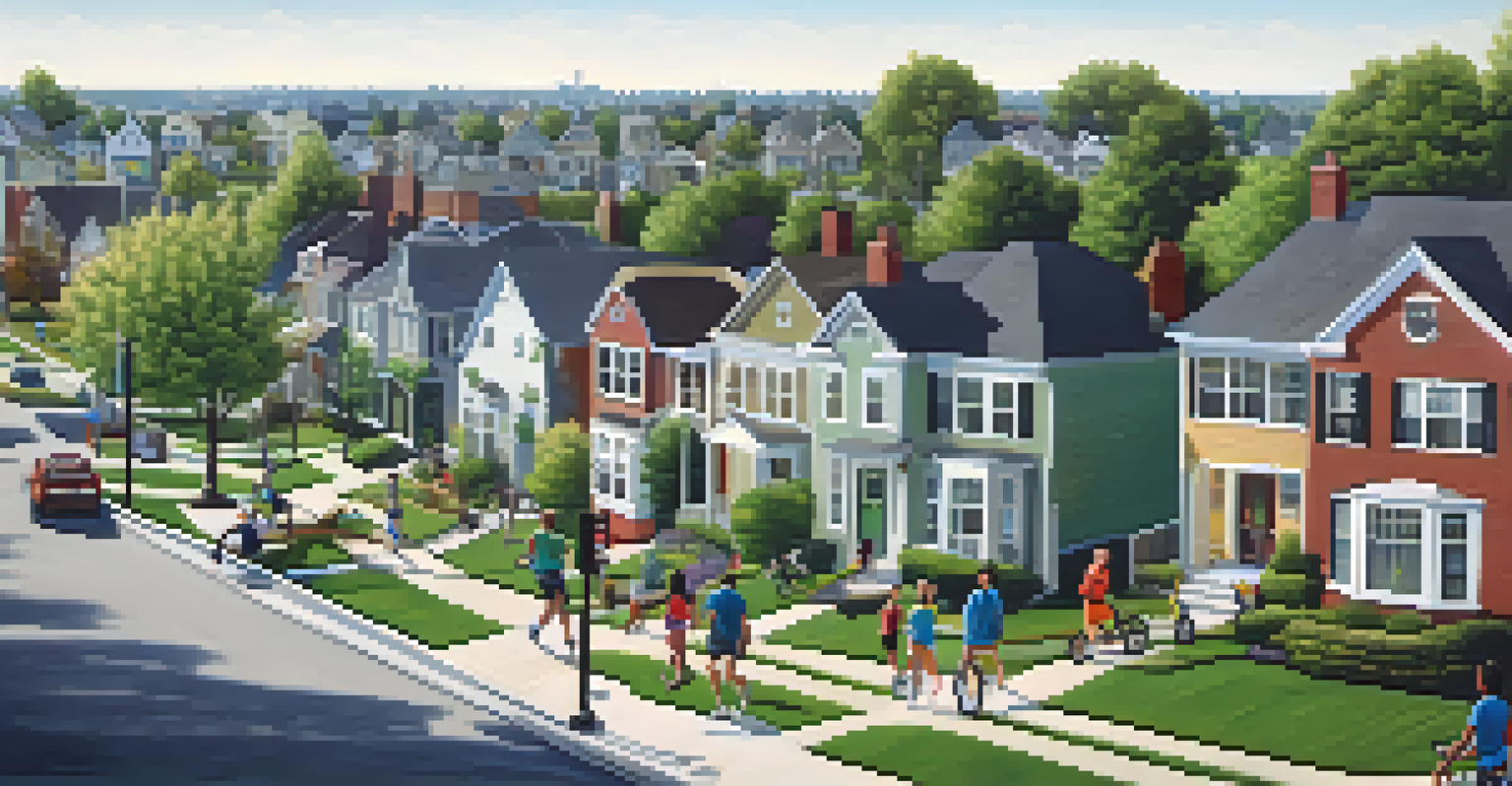Remote Work: A Catalyst for Changes in Housing Preferences

The Rise of Remote Work and Its Impact on Living Spaces
The shift to remote work has opened new possibilities for where people choose to live. With the ability to work from anywhere, many professionals are reevaluating their housing options. This newfound flexibility allows them to prioritize lifestyle over proximity to traditional office spaces.
The future of work will be defined by flexibility, effectiveness, and empowerment.
For instance, a tech employee no longer needs to live in a bustling city center, leading to a surge in interest in suburban and rural areas. This trend not only improves quality of life but also allows for more affordable housing options. As remote work continues to gain traction, the landscape of residential preferences is evolving dramatically.
The pandemic acted as a catalyst for this change, with people seeking larger homes, outdoor spaces, and a quieter environment. As a result, real estate markets in formerly overlooked areas are experiencing a boom, reflecting the changing priorities of modern workers.
Changing Housing Preferences: More Space and Comfort
One of the most significant shifts in housing preferences is the demand for more space. Remote workers are now looking for homes that can accommodate a dedicated workspace, ensuring a comfortable and productive environment. This has led to an increase in the popularity of homes with home offices or flexible spaces.

Additionally, the desire for comfort has prompted many to seek out properties with outdoor areas, like gardens or balconies. These features not only enhance well-being but also serve as a retreat from the confines of indoor life. In essence, people are prioritizing homes that support a balanced lifestyle.
Remote Work Reshapes Housing Choices
The rise of remote work enables individuals to prioritize lifestyle and living space over proximity to urban offices.
As a result, larger homes in less populated areas are becoming more desirable. This trend highlights the importance of comfort and functionality, pushing the real estate market to adapt to these evolving needs.
Urban Exodus: The Shift to Suburbia and Beyond
The urban exodus is a phenomenon where many individuals and families are leaving city life behind for suburban living. With remote work allowing professionals to operate from anywhere, the allure of spacious homes and lower costs in suburban areas is hard to resist. This migration is reshaping the demographic landscape of both urban and suburban communities.
Home is not a place, it's a feeling.
For example, areas that were once considered less desirable are now thriving as people seek the tranquility and space that suburbs offer. Schools, parks, and family-friendly amenities have become key selling points in these regions. Communities are seeing an influx of new residents looking for a more balanced lifestyle.
This trend is not just a temporary shift; it represents a long-term change in how people view urban versus suburban living. As remote work continues to evolve, the dynamics of housing markets will likely follow suit, with lasting implications for community development.
Rural Living: A New Frontier for Remote Workers
Rural areas are increasingly becoming attractive options for remote workers seeking peace and connection with nature. The ability to work from anywhere has led many to consider moving to less populated regions, where they can enjoy a slower pace of life. This trend is not just about escaping city life; it's about embracing a new lifestyle.
Living in rural areas often comes with benefits such as lower living costs, access to outdoor activities, and a stronger sense of community. For example, individuals can enjoy hiking, fishing, or gardening, all while maintaining their professional responsibilities through remote work. This lifestyle shift allows for a deeper connection to the environment.
Demand for Space and Comfort Grows
Many remote workers are now seeking larger homes with dedicated workspaces and outdoor areas to enhance their quality of life.
Moreover, the increase in demand for rural properties is encouraging local economies to adapt and grow. As more people move to these areas, services and infrastructure are being developed to accommodate the influx, creating vibrant communities that blend modern work life with rural charm.
The Role of Technology in Housing Decisions
Technology plays a pivotal role in shaping housing preferences in the era of remote work. With the rise of online real estate platforms, potential buyers can explore properties in different regions without ever leaving their homes. Virtual tours and remote consultations make it easier to navigate the housing market.
Additionally, advancements in communication tools have made it simpler for remote workers to stay connected with colleagues and clients, regardless of location. This technological ease reassures people that they can maintain their professional relationships while relocating. The comfort of technology fosters a sense of security during the transition.
As technology continues to evolve, it will further influence housing decisions. Smart home features, high-speed internet access, and energy-efficient designs are becoming essential criteria for buyers, reflecting a growing emphasis on convenience and sustainability.
Environmental Considerations in Housing Choices
As people reevaluate their housing preferences, environmental considerations are becoming increasingly important. Many remote workers are seeking homes that align with their values, particularly in terms of sustainability and energy efficiency. This shift is prompting a growing demand for eco-friendly features in properties.
For instance, homes equipped with solar panels, energy-efficient appliances, and sustainable materials are becoming more desirable. Buyers are recognizing the long-term benefits of these features, including reduced utility costs and a smaller carbon footprint. This trend reflects a broader societal movement towards environmental consciousness.
Rural Areas Gain Popularity
As remote work continues, rural living is becoming appealing for those desiring a slower pace and stronger community connections.
Moreover, as communities adapt to these preferences, we may see an increase in green developments and eco-conscious neighborhoods. This evolution not only meets the needs of remote workers but also contributes to a healthier planet for future generations.
The Future of Housing: Predictions and Trends
Looking ahead, the future of housing will likely continue to be influenced by the remote work revolution. As more companies adopt flexible work policies, the demand for diverse housing options is expected to grow. This evolution will lead to innovative solutions that cater to the changing needs of remote workers.
We can anticipate a rise in mixed-use developments that combine residential, commercial, and recreational spaces, creating vibrant communities where people can live, work, and play. These spaces will reflect the preferences of remote workers seeking convenience and connection in their neighborhoods.

Ultimately, the interplay between remote work and housing preferences will shape urban and rural landscapes alike. By embracing these changes, we can create a more adaptable and inclusive future that benefits everyone, regardless of where they choose to live.